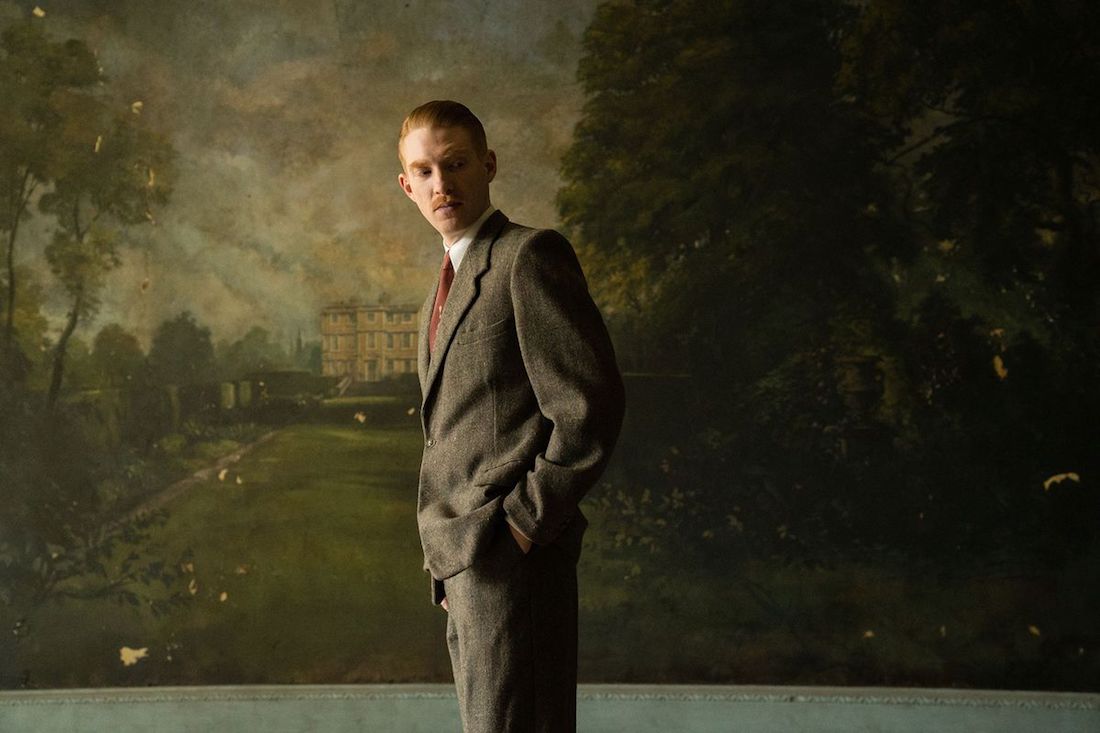
‘The Little Stranger’ weaves a dark, character driven tale of mystery
Written by: Kimberly Pierce, CC2K Associate Editor
The Hollywood box-office is currently in its autumn cooling off period. With the summer movie season over and awards time yet to begin, things are pretty quiet. This is usually when we get the works which are, “the best of the rest”. However, there’s a little independent feature hitting theaters this week, which might be overlooked in the bigger budget films still dominating the month of August. Coming from Irish director Lenny Abrahamson, The Little Stranger is a stunning period drama which shouldn’t be missed.
The Little Stranger follows Dr. Farraday (Domhnall Gleeson) as he returns to Hundreds Hall. The once stately manor holds an important place in his childhood nostalgia. However, as he arrives to treat an ailing maid, the crumbling facade doesn’t live up to his expectations. What’s happened to his idealistic fantasy? Farraday quickly finds himself pulled into the drama surrounding the house, as well as the remaining inhabitants: Roderick (Will Poulter), Caroline (Ruth Wilson) and their aging mother (Charlotte Rampling). There is more to Hundreds Hall than meets the eye with apparent hauntings, curses on the house and even violent death. Lenny Abrahamson directs from a script by Lucinda Coxon. The story comes from the novel of the same name by Sarah Waters.

The movie combines stunning performances with amazing stylistic detail in crafting a gorgeous, though melancholy work of horror. Abrahamson brings a highly stylized eye, deeply reminiscent of his work in the quirky 2014 Michael Fassbender vehicle Frank. Abrahamson teams up with art director Bill Crutcher, production designer Simon Elliott and cinematographer Ole Bratt Birkeland to create a cinematic work of art. Each and every frame of The Little Stranger is incredibly well-staged and is so beautifully shot, it could easily pass as a painting.
Equally important to the success of this film is the strength of its performances. Domhnall Gleeson absolutely shines as the complicated Farraday. The talented actor very much carries the story on his shoulders and brings a deeply structured portrayal of the repressed physician while appearing in almost every scene of the nearly two-hour movie. Equally brilliant is the always solid Ruth Wilson as Caroline. As the narrative plays out and their fondness for each other grows, Gleeson and Wilson prove to have an easy and relatable chemistry. This serves the narrative particularly well into the second and third acts as Farraday and Caroline explore their unconventional relationship.

Meanwhile Will Poulter is certainly under-utilized, he absolutely slays while he is on-camera. In the hands of each of these talented actors, the narrative personifies the evolution occurring around gender roles in the years following the war. Poulter brings a vivid take on post-war wounded masculinity as Rodrick fights to maintain control of his family’s estate while struggling with the traumatic physical injuries he sustained in battle. Meanwhile, Wilson’s portrayal of Caroline is equally powerful as a modern woman trapped by her gender in a society which places the responsibilities of inheritance and land ownership squarely on the male heir. There is a keen understanding of this in the story-telling and the tragic nature of both characters is clearly depicted on-screen.
The film provides an effective study on the dramatic transition occurring in British culture during this period in history. Not only do gender roles find themselves in the spotlight, but equally as interesting is the story’s treatment of class. The Little Stranger shows the well-established British class-structure in free fall. Abrahamson depicts glamour of a pre World War I Hundreds Hall in flashback, showing everything as it was in Farraday’s idealistic memory. However, the trauma of World War II destroyed his vision. The Ayres family can barely maintain the crumbling house in the transitioning economy. The house, and the family within, are a relic of a different time.
Coxon’s script paints a melancholy environment and takes the narrative through a number of stages. The Little Stranger is difficult to classify, and viewers who are looking for a straight horror movie will potentially find themselves disappointed. While the film brings gothic horror elements, especially in the second and third acts, the story is rather a study in mood. The script effectively incorporates drama and mystery into this versatile feature. However, the aim is ultimately watching these richly developed characters deal with the equally well-constructed transitional environment surrounding them.

Interestingly, the script adopts a free-flowing structure in places which occasionally proves difficult to follow. Farraday’s perspective largely dictates the narrative. As such, the film makes some sizable and jarring temporal jumps. Scenes at Hundreds Hall barely conclude before the next shot sees Farraday in drastically different locations at a much later period. While transitions are not always needed there are instances where a bit of dialogue or an extra half scene would be helpful to follow the action.
The Little Stranger is a definite bright-spot in the quiet, post Labor Day box office. While the film is not the straight horror tale the marketing wants it to be, the story weaves a transfixing and melancholy tale. There is something here for those who like haunted house movies, gothic horror and even simply independent cinema. Furthermore fans of Domhnall Gleeson, Ruth Wilson and Will Poulter should definitely add this one to their lists.
The Little Stranger is currently running in theaters around the country now.
